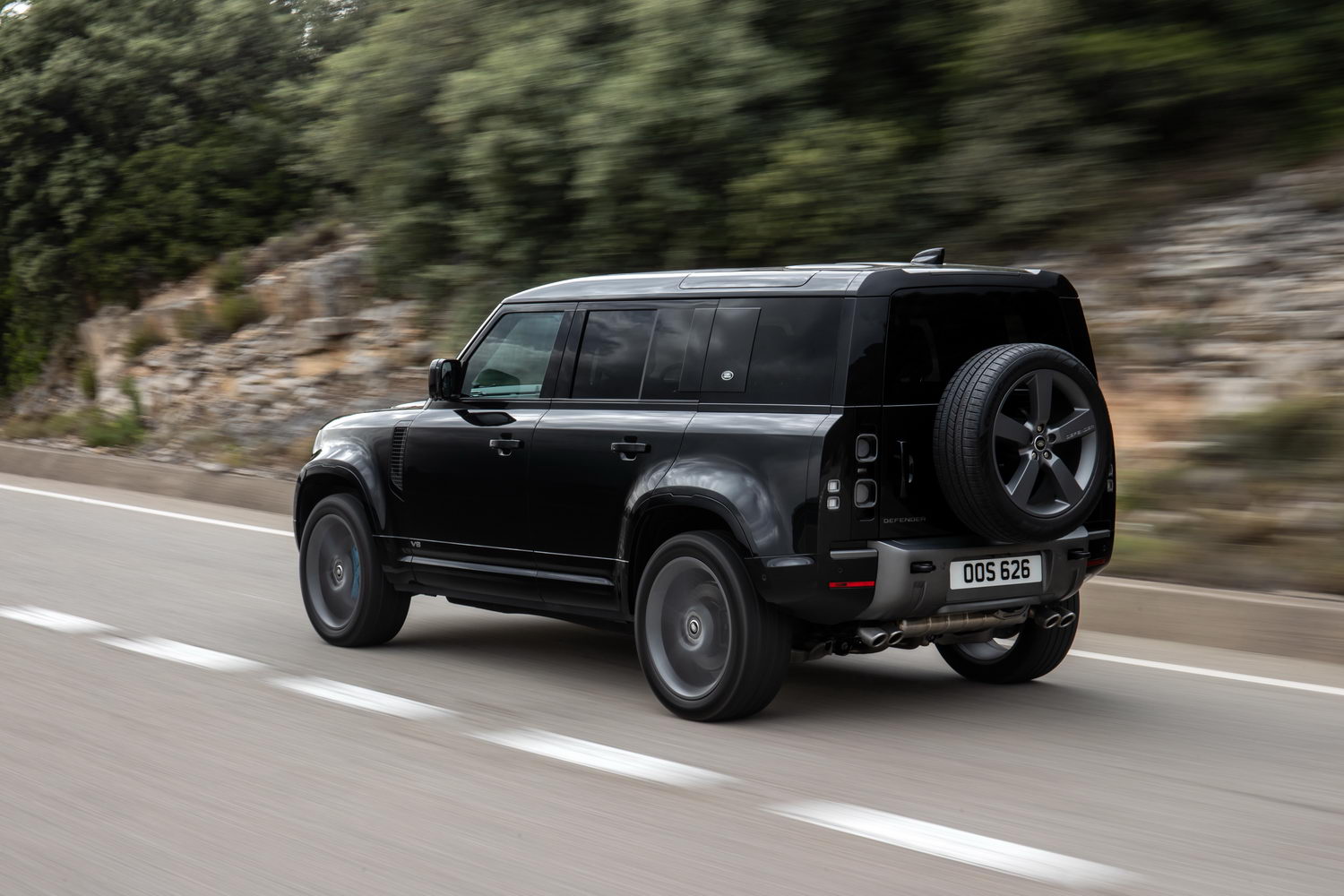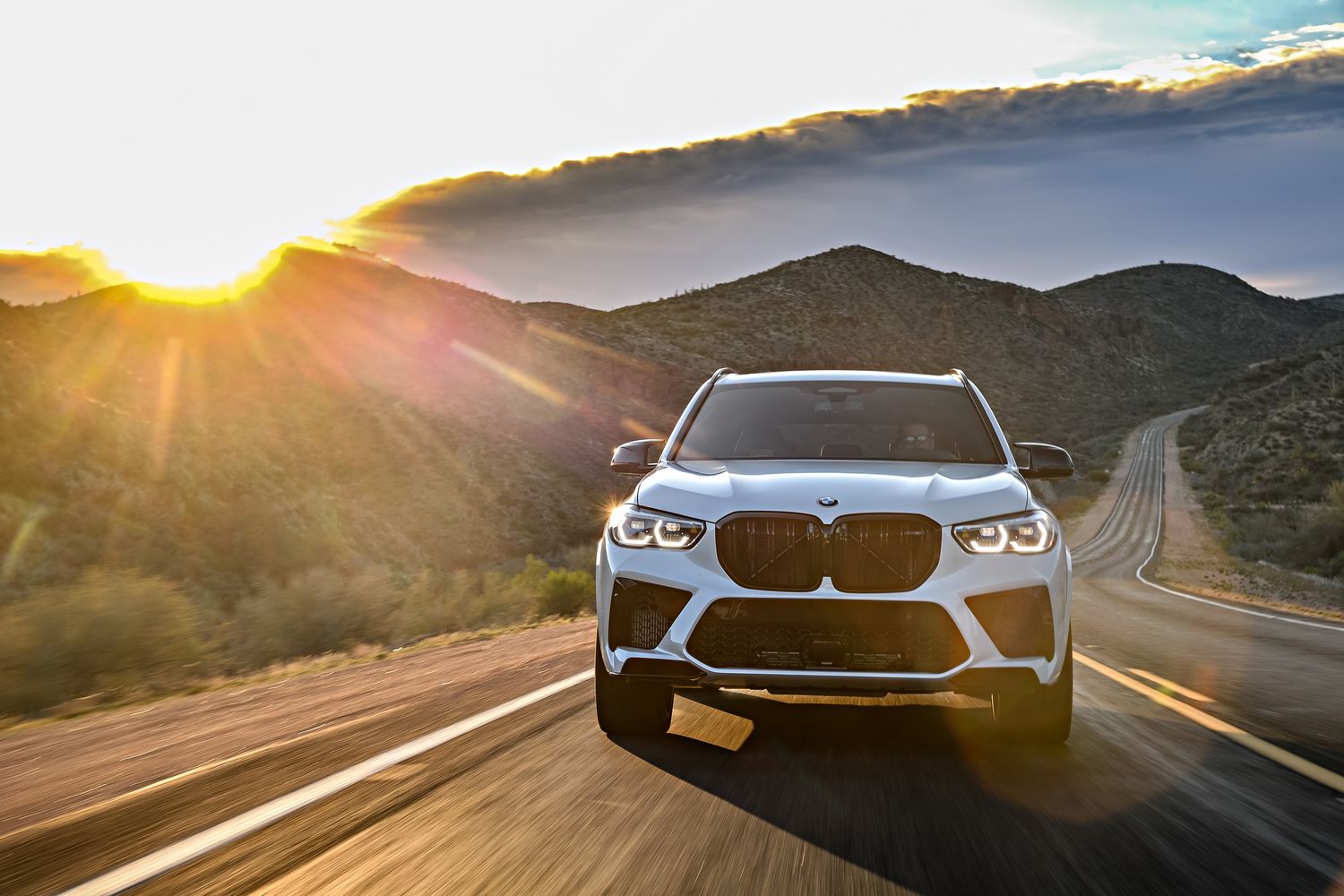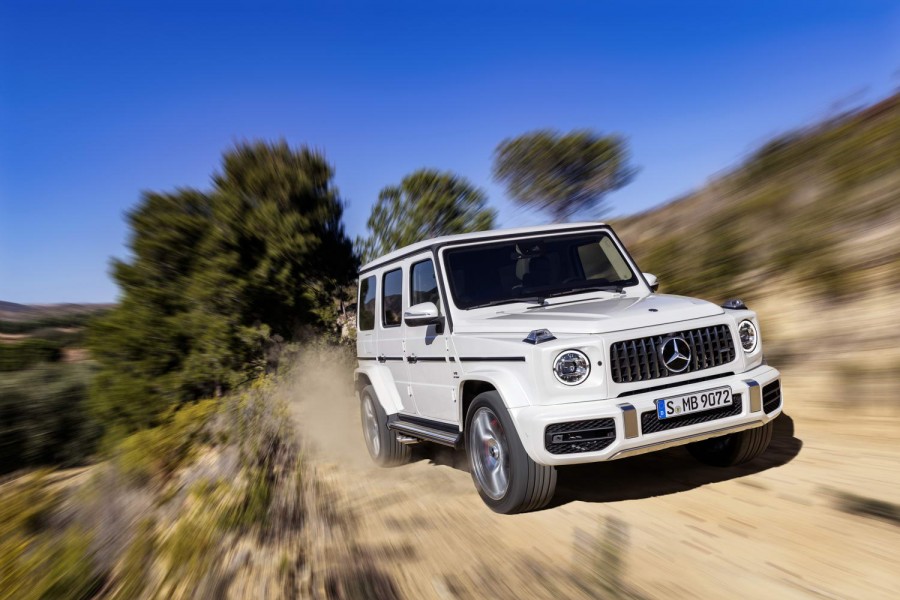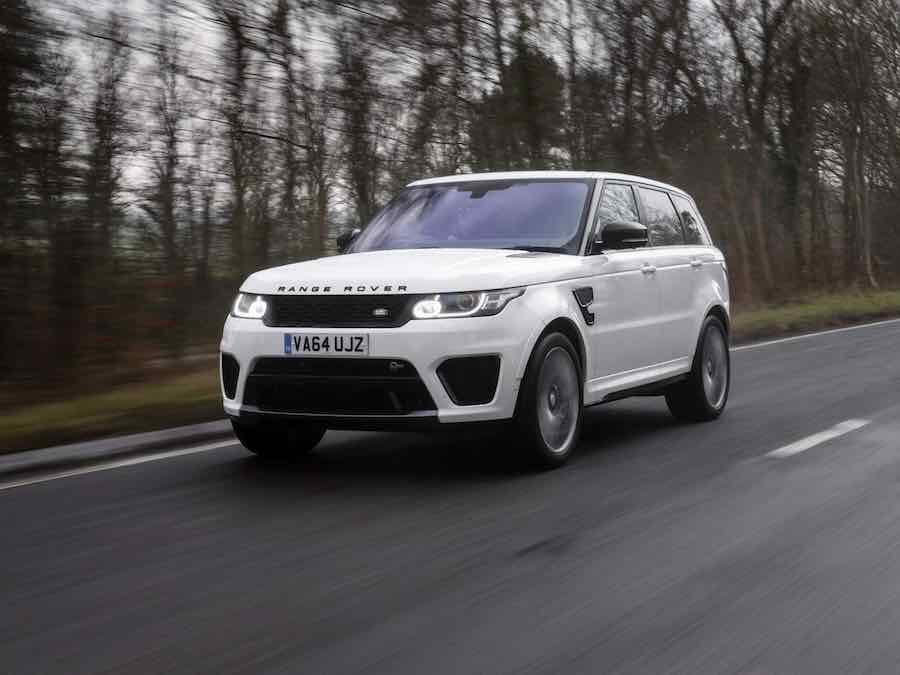Land Rover is enjoying great success with its new Defender, in spite of some early reservations about its design and ability. Order books are full and new models are starting to be added, including the recently launched plug-in hybrid and this, the full-fat 525hp V8. To find out if it is the best Defender available, we drove it in ways we've never driven a Defender before.
In the metal
If you're expecting the show-off brashness of the BMW X5 M or Mercedes-AMG G 63 then you'll be disappointed; unless you're planning on visiting an aftermarket styling company. The Defender V8 looks for the most part the same as any other Defender, until you look closely.
There's a very discreet classic V8 badge on the sill behind the front wheels, even more discreet when darkened by the black detailing option. You might also spot the blue Brembo brake callipers up front. These are a discussion point on their own, because the 22-inch rear wheels house Continental brakes. The reason, says Land Rover's vehicle dynamics senior manager, Adam Southgate, is because the Brembo option was the best for the front and Continental was best at the back. Simple then, but why the difference in colour? Well Brembo uses powder coating, Continental uses wet paint, and they couldn't get either company to match the colours precisely.
Then there's the real giveaway that this is no ordinary Defender: the pair of twin exhaust tips at the rear.
Inside, it's also rather understated, with the Alcantara-clad four-spoke steering wheel being the main give-away. That and the illuminated V8 tread plate badge. There's also a unique satin black colour to some of the powder-coated trim elements, but otherwise it's all rugged, comfortable and with decent tech, including the standard 11.4-inch Pivi Pro infotainment screen, which is far easier to use than the standard smaller one in other models.
Driving it
If you're expecting to rev the V8 and see buildings shake and leaves fall from trees, then you'll be disappointed. It's slightly more muted than Land Rover V8s of old and in keeping with the more discreet design, it's quieter than models like the Range Rover Sport SVR. Its nose also doesn't rise up dramatically, but that doesn't stop you feeling the force of over 2.6 tonnes hurtling to 100km/h in 5.4 seconds.
The supercharged V8 that is a legacy from the Ford days, provides plenty of power and lots of drama. It's a highly responsive thing, only showing a slight bit of lag occasionally and when you demand too much too quickly, and the electronics get grumpy.
That's unlikely to happen on a normal road drive, even a spirited one, but take to a makeshift rally stage in a field, complete with hay bales, yumps and turns and yes, it might feel a little out of its comfort zone. Only a little mind you, because that's exactly what we did and it relished it, drifting through corners and powering across the field like a World Rallycross entry. That's all helped in part by bigger anti-roll bars, an electronic differential from the Range Rover Sport SVR, pitch balancing to prevent dive and roll under load and a drift predictor - yes, a drift predictor, because that's what you need in a Land Rover Defender.
What you also get is a Dynamic mode, eventually. Getting there is fiddly, because unlike the ease of having a Dynamic mode button on the centre console or steering wheel, you first have to push a driving mode button on the console. That then brings up a screen on the infotainment system and after a couple of attempts you eventually press the right icon, which makes everything sharper so you can get on with being sporty and powering around everywhere. You sacrifice some comfort in Dynamic mode, with the re-calibrated suspension firming up, but dynamically Southgate says it is the sharpest model Land Rover makes.
Now you're assuming it's rubbish off-road, right? You'd be wrong, because apart from slightly reduced wheel travel due to the new anti-roll bars, it's almost as capable as any other Defender and certainly more capable than most rivals. We put it through some mild off-road work, muddy ruts, driving through a stream, over fields, nothing difficult, but it breezed through it all, even on Continental All-Season Cross Contact tyres.
A road drive also showed it can be nice and composed, although after tackling the fun stuff in the short wheelbase 90 version, we drove to Land Rover's head office in Gaydon, England in the longer 110, which felt more stable at speed.
What you get for your money
You really have to want a Defender V8 to pay €187,160 for the 110 version (€184,560 for the 90), especially when you consider that it's over a hundred grand more than the new Defender P400e plug-in hybrid, which is only two tenths slower to 100km/h and can drive up to 43km in electric mode. But logic rarely comes into the decision to buy a car such as this. Plus you can go proper off-roading in it, which isn't something a Mercedes-AMG G6 3 or a BMW X5 M can do.
Summary
The obvious problem with the Defender V8 is that you can get similar performance from the new plug-in hybrid version that costs over a hundred grand less. Granted it doesn't have quad exhausts or sound like a V8, but it's only a little slower and can travel in electric mode. But as Southgate points out, the V8 is the halo model for the Defender, the best dynamically and the best in terms of performance. He won't rule out the possibility of an SVR model coming from Special Vehicle Operations and insiders tell us that a new V8 is on its way from BMW, but for now, Land Rover is billing this as the best Defender by far.































